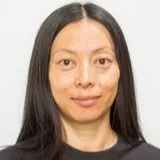HPV Self-sampling is set to be a game-changer for cervical screening that will help more women get screened, but we know that some women don’t feel confident taking a sample themselves. In our study we tried out a completely novel approach of having a doctor or nurse take a vaginal swab for cervical screening. We found that offering this alongside self-sampling to older women overdue screening gave an impressive boost to screening uptake that was 17% higher than women offered usual care.
Dr Anita Lim, Senior Epidemiologist, from the School of Cancer & Pharmaceutical Sciences
31 December 2021
Cervical screening without speculum boosts uptake
Offering cervical screening without a speculum increases uptake among older women, new research has found.

The study, published today in the British Journal of General Practice and led by Dr Anita Lim from the School of Cancer & Pharmaceutical Sciences, conducted a study at 10 GP practices in East London. 784 women aged 50-64 who were overdue screening were randomised to either receive a letter offering the choice of having a clinician-taken sample without a speculum or a self-sampling kit; or to have usual care.
Researchers found 17% more women were screened when they had the option not to use a speculum during the exam. Instead, a doctor or nurse could take a vaginal sample without a speculum.
Under-screened and unscreened women have the highest risk of developing cervical cancer. Cervical cancer disproportionately affects women over 65. Many women have a fear or dislike of the speculum, and speculum use can be particularly painful for women with menopause.
Screening without the speculum, in addition to self-sampling which requires individuals to obtain a kit and collect their own samples, are desirable options for women at higher risk of cervical cancer.
She added: ‘This uptake is higher than what we’ve seen in previous UK studies offering self-sampling alone. Our study shows that non-speculum clinician sampling is another promising tool for cervical screening to help us get more women screened and one that could easily be integrated into existing clinical care.’

